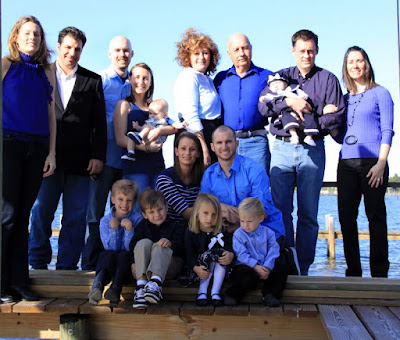I've decided that throughout the course of my blogging I plan to share tips and tricks for basic ways to improve how you capture your photography. This is for anyone who enjoys taking photos, anyone who may think of themselves as an amateur photographer, or anyone seeking photography professionally. I've decided not to go in any particular order or plan to post these at any given time. As you all know by now, I'm expecting a baby with the next couple of weeks (or sooner), so I'll just plan on providing these tips as time allows. ENJOY!
Photography Tip #1: Lighting and the Outdoors

If your subject is back-lit by bright sunlight and is slightly shadowed, using your flash will equal out the light in front of your subject with the light that is behind.

In addition, you can lighten harsh face shadows by using the camera's flash if the sun is overhead.
If you choose to do a photo shoot outdoors amidst the mid-day sun, you may want to consider the following to reduce the negative effects caused by harsh sunlight:
1. Place your subject(s) in a shaded area. Under or around trees or buildings are ideal locations for finding refuge from the mid-day sun.
2. If a shaded area isn't available, consider using a scrim to diffuse the effects of the harsh sun. This will provide a nice "soft-box" effect for your subject(s), keeping them properly exposed.
3. Take advantage of overcast or clouding days. Clouds provide natural "soft boxes" by diffusing sunlight for perfect lighting conditions.
4. Be sure to know your camera's flash range. The maximum flash range for most camera's is 5 to 10 feet. Pictures taken beyond that range will be underexposed (too dark).

While I love everyone in this picture (It's my family on my Husband's side), this photograph displays several basic outdoor lighting mistakes. Many of the subjects in the back row are looking directly into the sun, causing them to squint, overexposing their faces, and creating harsh shadows under their eyes, necks, and noses. On the other hand, the subjects in the first two rows are shaded, thus properly exposing their faces and reducing the negative effects of the harsh sun. This would have been a much better photo had everyone been properly and equally shaded.
I hope this basic tip has been helpful and is simple for you to understand and apply. Good luck experimenting with the suggestions listed above the next time you adventure outdoors with your camera. Happy Photographing!

Thanks Breena! Is it different in snow vs beautiful summer weather?
ReplyDeleteGreat tip! Love that you are giving some photography tips since I just got a new camera! I've found the flash helps outdoors but didn't know why. Thanks! :) Can't wait for more tips.
ReplyDeleteSarah - You're welcome :) And great question! Photographing in varying weather conditions can be tricky. Photographing a subject in the snow is no exception. Snow, as you know, can be very reflective, particularly if the sun is bright. Even if you place your subject in the shade, there could be an extensive amount of light being reflected by the snow, thus possibly over-exposing your subject or casting harsh shadows from below. Two options would be to use a polarizing filter or to use an ND (neutral density) filter. A polarizing filter is great for reducing reflections (particularly those caused by water, or in this case, snow). An ND filter will allow you, as the photographer, greater flexibility to change the aperture, exposure time, and/or blur of a subject in different situations and atmospheric conditions (again, in this case, snow). My suggestion is to experiment with these options. I would also suggest taking advantage of overcast days, which would reduce the amount of reflection off the snow. Hope that helps! Have fun experimenting!
ReplyDeleteLauren - Thanks! I'm glad you found it helpful! I hope you've been having fun experimenting with your new camera :)